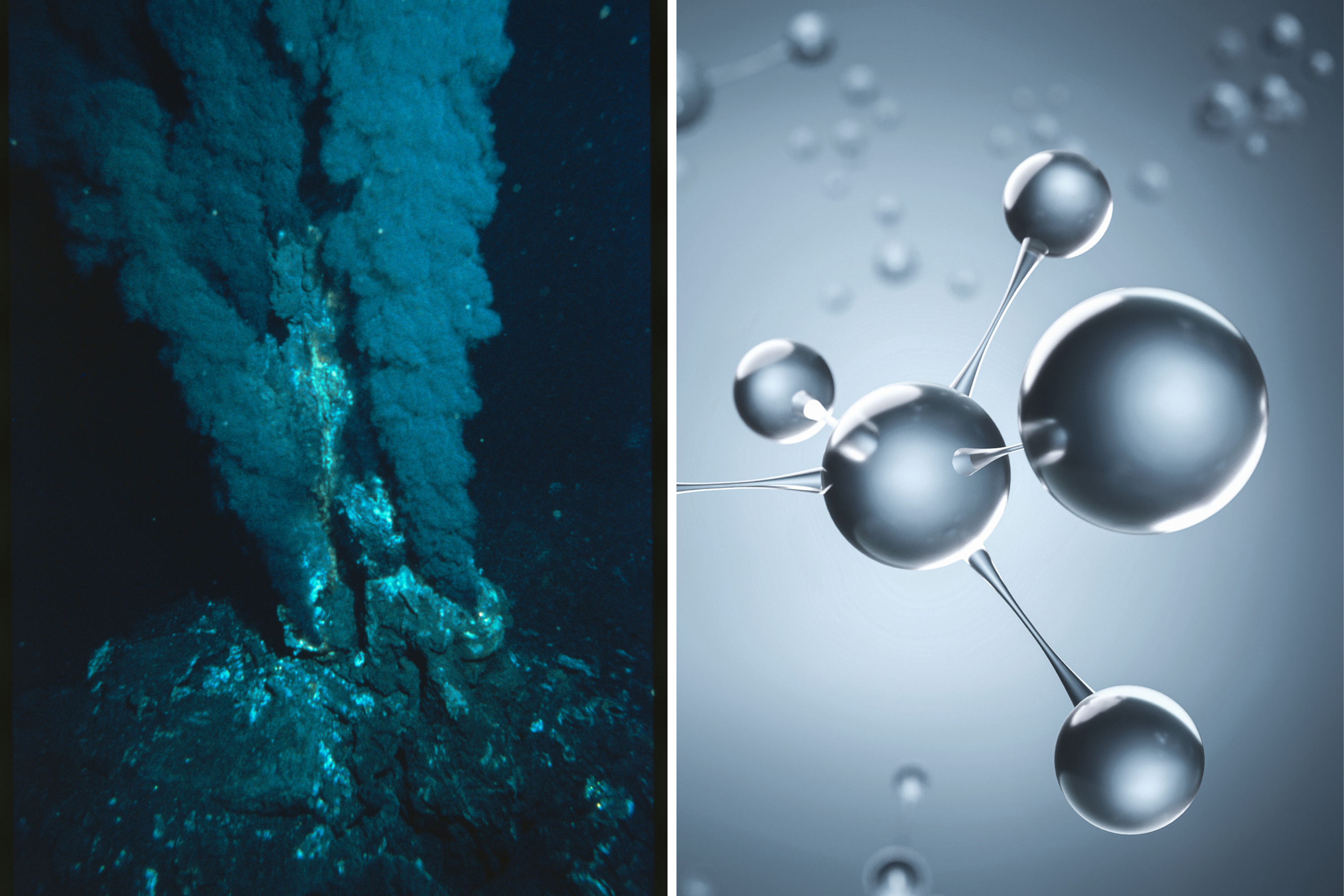Scientists have simulated the formation of fatty acids, a key component in the assembly of Earth’s first cells. The discovery not only offers key insights to the earliest moments of life on the planet, but it also shines a light on how life might start on other moons and planets.
The first forms of life on Earth emerged over 3.5 billion years ago from inert geological materials. The exact location of this emergence is still unclear, but many scientists believe that the earliest life forms appeared around deep-sea hydrothermal vents.
Hydrothermal vents are like rocky chimneys on the ocean floor which spew out plumes of superheated fluid from magma beneath the Earth’s crust. “Hydrothermal vent sites, and in particular alkaline hydrothermal vents, are unique in bringing together several key threads in origins of life theories together,” Jon Telling, a reader in biogeochemistry at Newcastle University in the U.K, told Newsweek.
“First, they provide a continual and free source of energy to drive the synthesis of relevant organic molecules through the presence of strong chemical gradients. Second, they contain abundant metals such as iron and nickel, that are also abundant in evolutionary ancient proteins that are present in microorganisms today.

Ralph White/Khanisorn Chaokla/Getty
“Finally, attempted reconstructions of the ‘Last Universal Common Ancestor’ of all life on Earth suggest that it was a thermophile or hyperthermophile (‘liked it hot’), used hydrogen gas for energy (‘food’), and could harness proton gradients to drive biochemical reactions; all consistent with the mixing of alkaline hydrothermal fluid with more acidic ocean or surface water.”
But for life to form at these vents, several key ingredients had to come together. “Broadly, scientists have focused on molecules that either store and transfer biological information (e.g. nucleic acids, DNA or RNA); catalyse reactions within cells (e.g. amino acids, [the building blocks of proteins]); [or] make cell membranes (giving a cell its own chemical identify separate from the external environment) e.g. fatty acids.”
This last category, the fatty acids, is the focus of Telling’s latest paper, lead by postdoctoral research associate at Durham University, Graham Purvis.
Fatty acids are long organic molecules with regions that both attract and repel water. Therefore, when they are placed in a watery environment they automatically come together in cell-like compartments, with the water-attracting parts on the outside and water-repelling parts on the inside. It is these molecules that would have formed the first cell membranes, isolating and protecting the inner workings of the cell from the world around it.
“Our research has shown that fatty acids alongside a range of other different organic molecules can be formed on iron-mineral surfaces, from a stream of pressurised hydrogen gas and dissolved carbon dioxide within a hydrothermal vent fluid,” Telling said.
But, had these molecules remained stuck on the surface of the iron-minerals, life on Earth might have never formed. “However, hydrothermal fluids can be dynamic environments, with changing flow paths and proportions of mixing between surface or seawater and the hotter hydrothermal fluid,” Telling said.
“Crucially, we think that when changes in fluid mixing cause the fluid to become less acidic, some organic molecules such as fatty acids should become electrically negatively charged, as will the mineral surface, effectively repulsing each other. These organic molecules should then lift off the mineral surface into the water in what has been described as an ‘electrostatic explosion,’ and then (as fatty acids have both a ‘water loving’ end and ‘water hating’ end ) spontaneously form fatty acid-based membrane-bound spheres, the precursors of ‘protocells’ (the precursors to biological cells).”
In their study, published in the journal Communications Earth and Environment, the team were able to demonstrate just how easily these long-chain fatty acids can form under the replicated conditions of a hydrothermal vent.
“[This study] opens the door to the next phase of experiments: proving that they can ‘lift off’ and spontaneously form membrane-bound spheres’; a key stepping stone to protocells,” Telling said.
What’s more, similar conditions have been proposed to exist on other planets and moons in our solar system: “At the bottom of ice-covered oceans, such as within Jupiter’s moon Europa, or Saturn’s moon Enceladus, or in the past at active hydrothermal vent sites on Mars, for example,” Telling said.
“This research may also help inform the search for similar chemistry, and the origin of life, elsewhere in our solar system.”
Do you have a tip on a science story that Newsweek should be covering? Do you have a question about the origin of life? Let us know via science@newsweek.com.
Uncommon Knowledge
Newsweek is committed to challenging conventional wisdom and finding connections in the search for common ground.
Newsweek is committed to challenging conventional wisdom and finding connections in the search for common ground.

